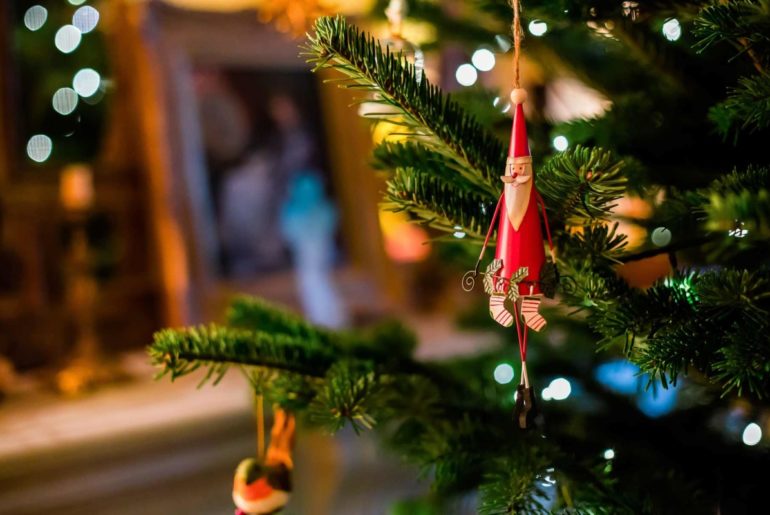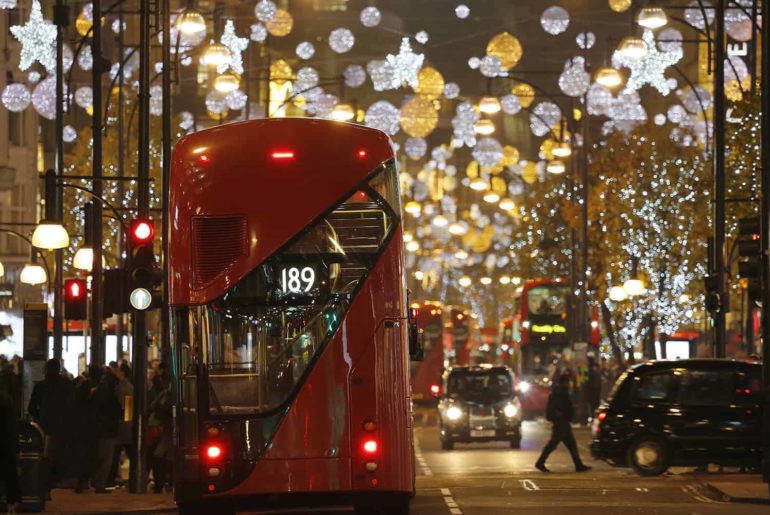…and where to go when you visit them!
Brits, we’re a confusing bunch. Not content with having one of the most difficult-to-learn languages in the world, we decided to take it one step further and fill our maps with towns that sound absolutely nothing like their spelling. No wonder tourists and visitors struggle to get their heads around the London Underground and its many tricky station names. Plagued with silent letters and dropped syllables, the Tube (London lingo for the metro system) is a minefield of mispronunciations.
Luckily, we’re here to help you with our comprehensive guide to London’s most challenging station names. Keep it handy during your visit to the capital city, and you’ll be ready to breeze through the London underground like a local. Add a lack of eye contact and a barely audible grumble when someone stands on the wrong side of the escalator (note: always stand on the right!), and even the most discerning Londoner will be convinced that you’re a veteran commuter.
How to pronounce difficult London Tube stations properly? At a glance:
- Aldwych – “Awld-witch”
- Bermondsey – “Bur-mun-zee”
- Borough – “Buh-ruh”
- Canary Wharf – “Kah-nare-ree Worf”
- Chiswick Park – “Chiz-ick Park”
- Clapham (North/Common/South) – “Kla-pum”
- Deptford Bridge – “Det-fud Bridge”
- Euston – “Yew-stun”
- Farringdon – “Fah-ring-dun”
- Gloucester Road – “Gloss-ter Road”
- Greenwich – “Gren-idge”
- Holborn – “Ho-bun”
- Leicester Square -“Less-tuh square”
- Leytonstone – “Lay-tun-stone”
- Marylebone – “Mar-lee-bun”
- Ruislip – “Rye-slip”
- Southwark – “Suth-uk”
Aldwych
Where on the map? Aldwych station was on the Piccadilly line, but sadly, it was closed almost 30 years ago due to low passenger numbers.
Correct pronunciation – “Awld-witch”
Notes from a Londoner: Although the station was closed to the public in 1994, the tunnels through the station are still used for storage. The striking station building remains standing and has been featured in several films, including Atonement, Sherlock, and V for Vendetta.
If you’re interested in visiting Aldwych station and taking a step back in time, check out the London Transport Museum’s ‘Hidden London’ tour, which includes visiting Aldwych station, along with other closed and disused stations on the London Underground. Discover forgotten London and learn about the fascinating and diverse histories of the lines running across our Tube network.
Bermondsey
Correct pronunciation – “Bur-mun-zee”
Where on the map? Located on the Jubilee line in Travel Zone 2, Bermondsey station is in the eastern part of Bermondsey in the busy London Borough of Southwark.
Notes from a Londoner: Opened in September 1999 as part of the Jubilee Line Extension, Bermondsey station stands out for its extensive use of natural light, giving it an airier feel than many of its neighbouring stations.
Many attractions are nearby, including the Old Bermondsey Brewery, the Surrey Docks, and the Thames Path. However, locals will tell you that there’s only one way to spend a Saturday afternoon in the area, and that’s with a pub crawl down the Bermondsey Beer Mile. A collection of breweries and taprooms running parallel to the railway line, the Bermondsey Beer Mile will give you a taste of some of the finest locally brewed beers and ales around, with a welcoming and relaxed atmosphere to boot. Be sure to stop at the vibey Maltby Street Market for a bite to eat first!
Borough
Correct pronunciation – “Buh-ruh”
Where on the map? Borough station is on the Bank branch of the Northern line, between Elephant & Castle and London Bridge stations. It is in Travelcard Zone 1, the most central zone of the London travel network.
Notes from a Londoner: Although a seemingly small station compared to its neighbouring tube stops, Borough station is in the heart of London’s Southwark district and close to many of the city’s most popular attractions. Don’t miss Borough Market, a vibrant food market with over 100 stalls that Londoners flock to at the weekend for their delicious street food and fresh produce.
Take a short stroll down the South Bank, and you’ll soon find the world-famous Shakespeare’s Globe. If you’re lucky enough to have tickets to a play, then you’ll enjoy a theatrical spectacle like no other. If not, Swan at the Globe is a fantastic place to stop for lunch, a cocktail, or a memorable afternoon tea overlooking the Thames, with unbeatable views of St Paul’s Cathedral.
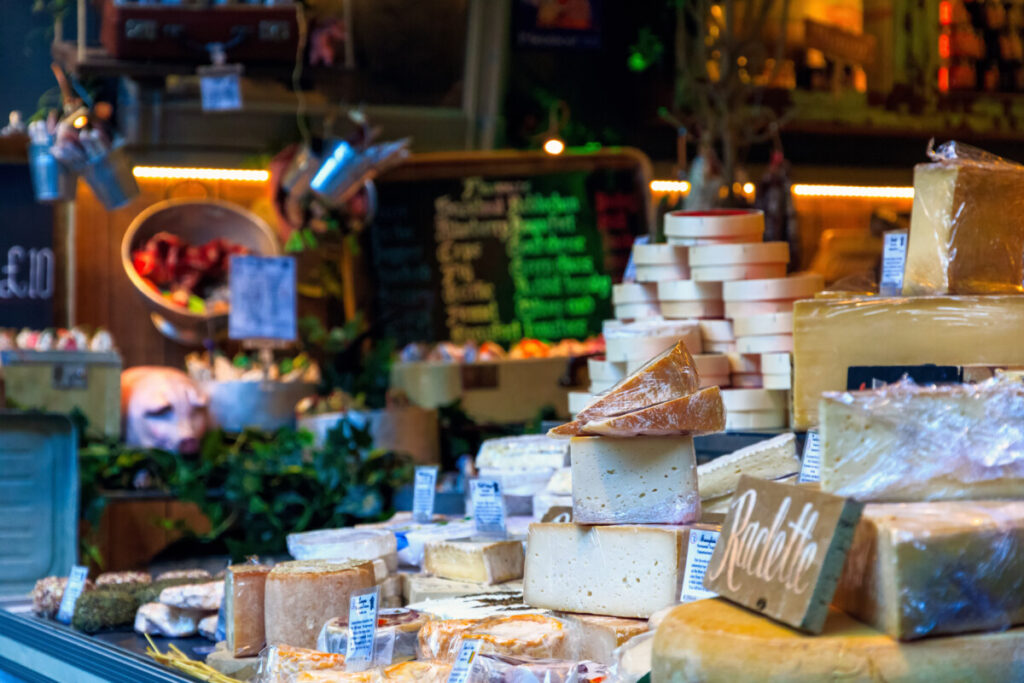
Canary Wharf
Correct pronunciation – “Kah-nare-ree Worf”
Where on the map? Canary Wharf station is located in the Docklands area of East London. It is on the Jubilee line, between Canada Water and North Greenwich stations, and falls under Travelcard Zone 2.
Notes from a Londoner: The city’s major financial and commercial district, Canary Wharf, is home to many dizzying skyscrapers, including One Canada Square, which is the tallest building in the United Kingdom (you really can’t miss it from the London skyline!) During the week, the station is teeming with life as busy bankers and businesspeople rush around purposefully. At the weekend, the area empties out, but don’t let that put you off – it’s the perfect time to sample its impressive list of swanky cocktail bars and restaurants, including Boisdale, The Sipping Room and The Lowback.
Chiswick Park
Correct pronunciation – “Chiz-ick Park”
Where on the map? The District line serves Chiswick Park and is between Turnham Green and Acton Town stations. Located in West London, the station is in Travelcard Zone 3.
Notes from a Londoner: With more of a village feel than its predecessors on this list, Chiswick Park is a popular stop for commuters and shoppers alike. The station is a short walk from Chiswick High Road, which is home to an impressive range of gastronomic delights, including the stunning Villa di Geggiano, an Insta-perfect Italian restaurant serving up authentic Tuscan dishes to satisfied locals and tourists alike. For a chilled day out whilst sticking to the Underground network, Chiswick’s leafy streets are the perfect antidote to the fast pace of the city centre.
Clapham (North/Common/South)
Correct pronunciation – “Kla-pum”
Where on the map? There are three Clapham stops in the London Underground network, all on the Northern Line and situated one after the other. The stations are all in Travelcard Zone 2 (although to make it extra confusing, Clapham South is also in Zone 3, if you get off after travelling in from a less central Zone!)
Notes from a Londoner: Firstly, Clapham is HUGE. Not only does it cover three separate Tube stations, but you also have Clapham Junction – the UK’s busiest overground railway station, thrown into the mix. In the middle of these transport hubs sits Clapham Common, a large, open green space loved by runners, dog walkers, families and groups of friends gathering on the grass to chill and socialise.
Clapham is a popular area for young professionals and is home to an enormous selection of eateries, pubs and bars. Try The Windmill in the centre of the common for a traditional Sunday roast, or for a memorable date night, head to WC, a sexy wine and cocktail bar serving up charcuterie in a beautifully restored space which was, unbelievably, formerly public bathrooms! If your budget is a little higher, head to Trinity in Clapham Old Town, a Michelin-starred restaurant offering exclusive tasting menus that showcase the very best of British produce.
Deptford Bridge
Correct pronunciation – “Det-fud Bridge”
Where on the map? Deptford Bridge is a station on the Docklands Light Railway (DLR). It is located in the Royal Borough of Greenwich, on the boundary between Travelcard Zones 2 and 3.
Notes from a Londoner: Whilst Deptford Bridge isn’t exactly the most exciting of Tube stations, stay on the DLR for one more stop, and you’ll find yourself at the Cutty Sark; a proud British clipper ship which is now a museum, a Grade I listed building and is a national treasure
Whilst you’re in the area, why not visit the Fan Museum? Now, hear us out here; this really is better than it sounds. An award-winning, independent museum situated across a pair of beautifully restored Grade II-listed early Georgian period townhouses, it is the perfect escape for culture vultures, design lovers or those who simply want to view something beautiful and totally unique. With tickets coming in at £5 or less, you can spend a slow morning admiring the extraordinary collections and learning about the history, culture and craft of these beautiful items.
Euston
Correct pronunciation – “Yew-stun”
Where on the map? Located in the London Borough of Camden, Euston is a major interchange station for National Rail and London Underground services.
Notes from a Londoner: Euston is a travel hub for getting around the UK. Trains from Euston run to major cities across the north of England, including Birmingham, Manchester, and Liverpool, as well as two of Scotland’s hot spots, Edinburgh and Glasgow. You can also hop across to King’s Cross St. Pancras station in just a few minutes, where you can pick up the Eurostar train service to Paris, Brussels and Amsterdam.
Book lovers will be delighted to discover that the British Library is just a short walk from Euston Station. One of the largest libraries in the world, this London landmark houses an extensive collection of books, manuscripts, maps, and other materials. The library’s eye-watering collection comprises over 170 million items, spanning from the 7th century to the present day. Grab a Visitor’s Pass and spend a morning getting lost amongst the stacks for the ultimate bookworm experience.
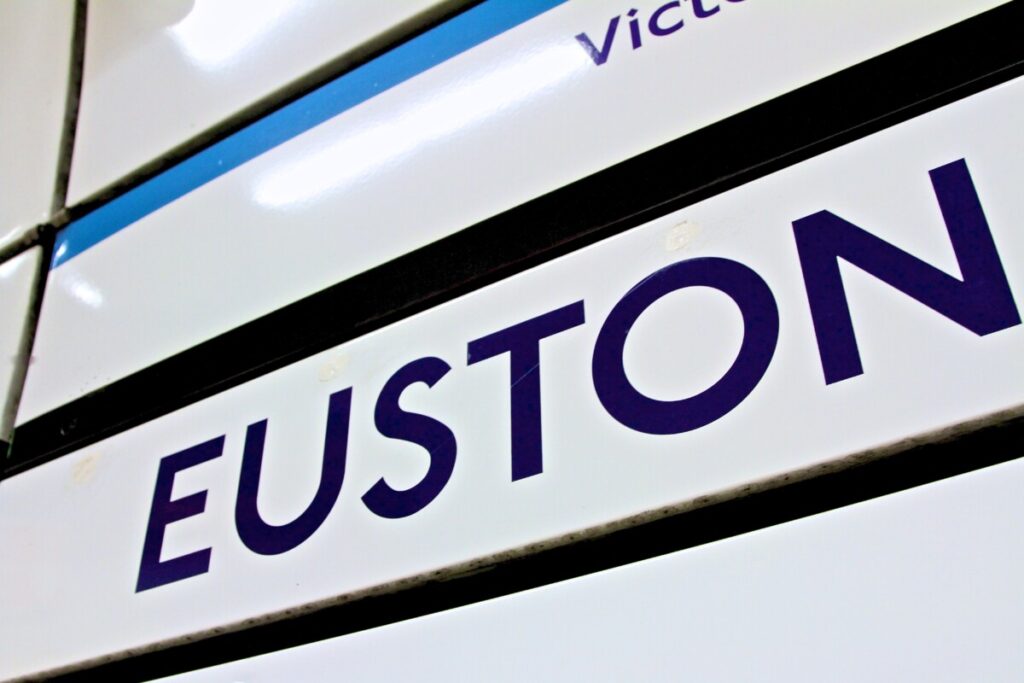
Farringdon
Correct pronunciation – “Fah-ring-dun”
Where on the map? Located in Clerkenwell, Farringdon is in Travelcard Zone 1. Farringdon station is served by the Metropolitan, Circle, Hammersmith & City, and Thameslink lines.
Notes from a Londoner: With its diverse mix of old and new establishments, from traditional English pubs to trendy bars and restaurants, Farringdon is a great place to hang out and taste London life with the locals. If it’s classic British pub grub you’re after, The Eagle uses the best ingredients and is known for its mouthwatering steak sandwich.
If you’re game for something a little different, head to The White Haus, a quirky après ski-themed bar serving dinner and drinks in a setting so cosy you won’t notice the hours flying past!
Gloucester Road
Correct pronunciation – “Gloss-ter Road”
Where on the map? Gloucester Road station is located in Kensington, West London. Straddling the boundary between Travelcard Zones 1 and 2, the station is served by the District, Circle and Piccadilly lines.
Notes from a Londoner: Gloucester Road is perfectly situated to take advantage of one of London’s most culture-laden boroughs. Kensington is home to a number of world-famous museums, including the Natural History Museum, the Science Museum and the V&A Museum of Design, all of which offer free entry to the public (yes, really!). Whilst you’re in the area, make sure to swing by The Royal Albert Hall, one of London’s most iconic constructions. You’ll feel the building’s power as you stand outside looking up at the home of the BBC Proms and some of the most memorable musical performances in modern British history.
Greenwich
Correct pronunciation – “Gren-idge”
Where on the map? Located on the River Thames in South East London, Greenwich is served by the Docklands Light Railway (DLR) and National Rail and is in Travelcard Zone 2.
Notes from a Londoner: Best known for its maritime history and its role in the development of timekeeping, Greenwich has a completely unique feel and manages to achieve a welcoming ‘village’ vibe despite its central location. Make like a local and head to Greenwich Market to browse its vibrant selection of jewellery, craft, antique and street food stalls. Even better, it’s all under cover, so London’s unpredictable weather won’t be able to catch you off guard. When you’ve finished shopping, stop off at Monsoon Cafe to refuel with freshly baked scones and jam and plan your next move.
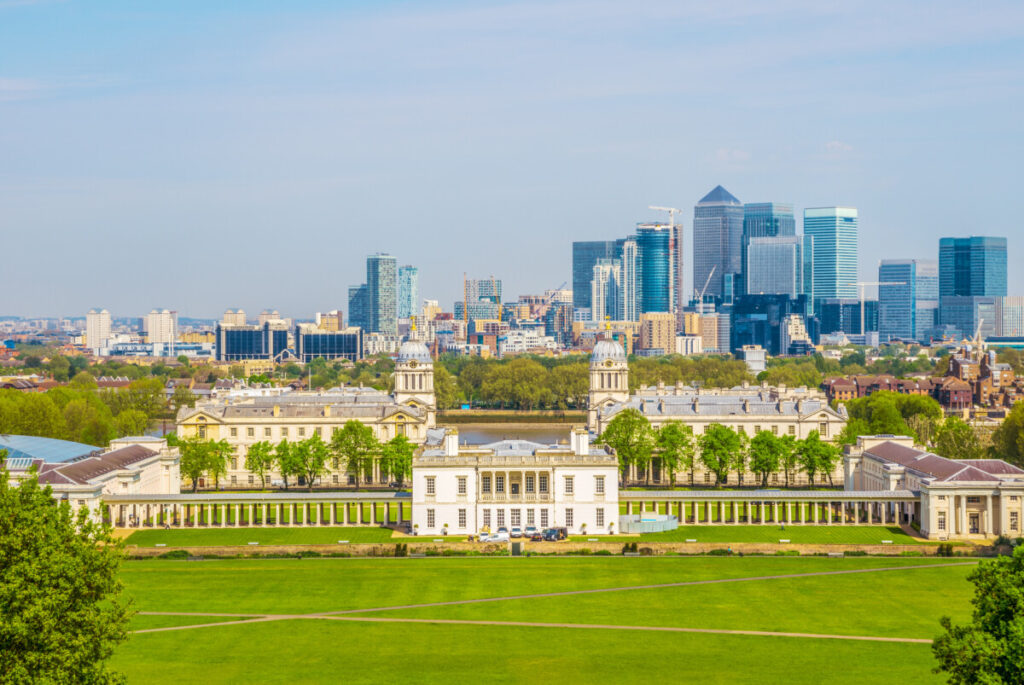
Holborn
Correct pronunciation – “Ho-bun”
Where on the map? Located in Central London, at the junction of High Holborn and Kingsway, Holborn is served by the Central and Piccadilly lines and is in Travel Zone 1.
Notes from a Londoner: Holborn is just a hop, skip and a jump away from London’s thriving West End, where you’ll find critically acclaimed musicals such as The Lion King and Wicked wowing crowds every day of the week. Whilst you’re there, be sure to spend some time wandering around Covent Garden and sampling its culinary offerings; Cora Pearl, with its rich interiors and exquisite British comfort food, is one of our favourites.
If you have time, take a detour through Neal’s Yard; a small courtyard bursting with colour, where you’ll discover a handful of delightful independent boutiques and cafes.
Leicester Square
Correct pronunciation – “Less-tuh square”
Where on the map? Leicester Square station is located in the West End of London. It is served by the Northern and Piccadilly lines and is in Travelcard Zone 1.
Notes from a Londoner: Sat right in the heart of the West End, Leicester Square is undeniably a classic hot spot for London sightseers. However, if you want to go slightly off the tourist track, head into nearby Soho and enjoy exploring its laid-back atmosphere and endless selection of independent eateries offering cuisine from far and wide. Kricket serves up modern Indian cuisine from an open kitchen with a very cool urban-style interior. If you’re in the market for classic British fare, a five-minute walk will deliver you to The Porterhouse, a multi-level pub that feels like a rabbit warren and just keeps on going. With a huge selection of draught beers and a warm, welcoming ambience, it’s the perfect place to find a cosy corner and settle in for the evening.
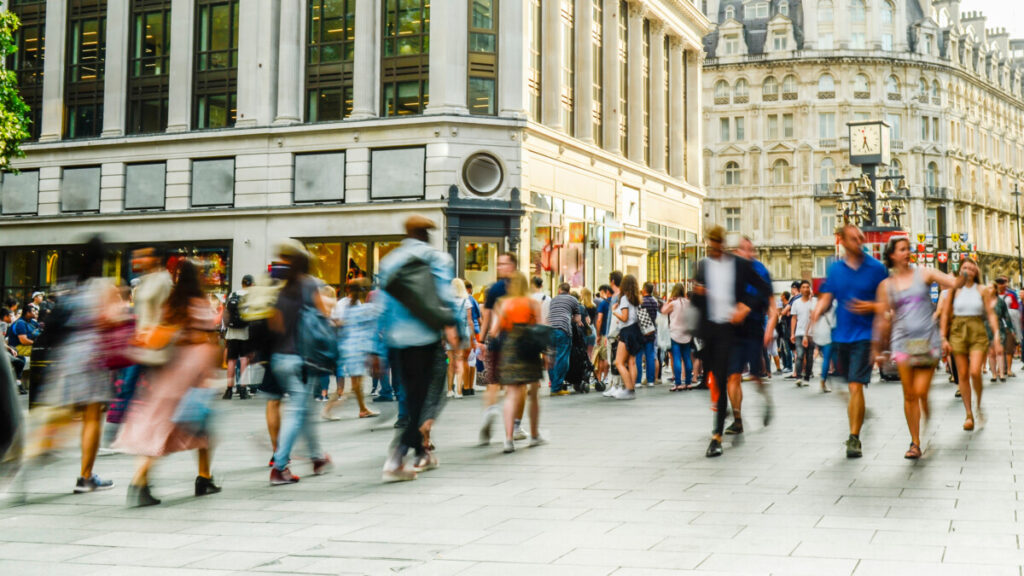
Leytonstone
Correct pronunciation – “Lay-tun-ston”
Where on the map? Leytonstone station is located in the London Borough of Waltham Forest, in East London. It is on the Central line of the London Underground and falls into London Travelcard Zone 3.
Notes from a Londoner: If there’s one thing guaranteed to bring a sparkle to a Londoner’s eye, it’s a Farmers’ Market. Popping up every Sunday from 10am-2pm, Leytonstone Farmers’ Market offers a colourful and flavoursome array of produce that comes direct from farmers, fishermen, bakers, growers and makers. To get a taste of the real London life, head to the market early and enjoy the bustling atmosphere as you navigate through rows of seasonal, fresh produce. Finish off your visit by heading to the green expanses of the Wanstead Flats for a walk and some brilliant wildlife-spotting opportunities.
Marylebone
Correct pronunciation – “Mar-li-bun”
Where on the map? Marylebone Station is served by the Bakerloo, Circle, and Metropolitan lines of the London Underground. It is also the London terminus of the Great Central Main Line, which runs from Nottingham and Sheffield to London. It is in Travelcard Zone 1.
Notes from a Londoner: Elegant and classy Marylebone is known for its distinguished Georgian architecture, its many small parks and gardens, and its proximity to some of London’s most popular tourist attractions, including leafy Regent’s Park and the iconic Selfridges department store. However, Marylebone locals are a tight-knit bunch, and there is a real local community spirit in this special part of the city. To make the most of Marylebone, people-watching is a must; grab a coffee and a cake at 31 below and enjoy watching beautiful residents and their equally beautiful dogs stroll past.
Culture vultures will be spellbound by the art and splendour of The Wallace Collection. Famous for its collection of French 18th-century art, including paintings by Watteau, Boucher, Fragonard, and Chardin, this treasure trove of a townhouse offers free admission and is an absolute must-visit for locals and tourists alike.
Ruislip
Correct pronunciation – “Rye-slip”
Where on the map? Ruislip station is located in the London Borough of Hillingdon, in west London. Served by the Metropolitan line and Piccadilly line (the Uxbridge branch), between Ruislip Manor and Ickenham stations, it falls into Travelcard Zone 6.
Notes from a Londoner: Residents of Ruislip know that there’s only one place to head when the weather is good: Ruislip Lido. This stunning natural lake is perched on the edge of a 726-acre nature reserve and offers the perfect setting to relax, get back to nature and enjoy some time away from the noise and fumes of the city. If that’s not enough to convince you, there is also a charming miniature train that will take you around the perimeter of the lake. All that’s left for you to do is sit back and admire the view. All aboard!
Southwark
Correct pronunciation – “Suth-uk”
Where on the map? Southwark station is located on Blackfriars Road, south of the River Thames in the London Borough of Southwark. It is on the Jubilee line between Waterloo and London Bridge stations and is in Travelcard Zone 1.
Notes from a Londoner: If you find yourself in Southwark, you’ll want to head straight to Old Union Yard Arches. Nestled inconspicuously beneath the railway arches, this collection of places to ‘eat, drink, see and meet’ is one of London’s lesser-known gems. Catch a play at the small but mighty Union Theatre, whose stage plays host to an impressive line-up of musicals and comedies, and follow up with a meal at Tel Aviv-inspired eatery Bala Baya, whose beautifully presented Israeli dishes promise to ignite all your senses.
How can I learn more about the London Underground?
Want to explore the London Underground with someone who knows it like the back of their hand? Join us on our Secrets of the London Underground group walking tour to discover the secrets behind the world’s first underground railway.
Discover the emotional story of the ‘Mind the Gap’ widow, the spark behind The Tube map and a glimpse of ‘ghost’ platforms shut off from the world.
This article was written by Briony Samuel, a Content & Travel Writer and born and bred Londoner.




